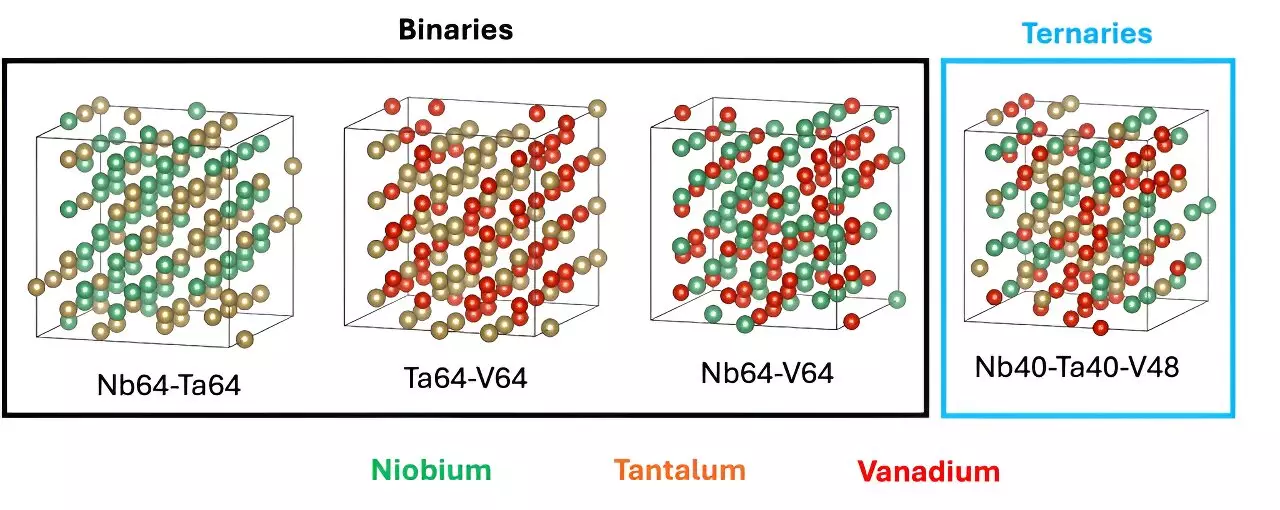The quest for sustainable and efficient energy sources has led scientists to explore nuclear fusion as a solution, but developing materials to withstand the extreme conditions within fusion reactors presents a daunting challenge. A groundbreaking study from the Department of Energy’s Oak Ridge National Laboratory (ORNL) has made significant strides in addressing this issue by leveraging artificial intelligence (AI). This innovative approach aims to facilitate the discovery of new alloys suitable for shielding components in nuclear fusion applications.
Traditionally, researchers have relied on tungsten-based materials for their shielding properties in nuclear reactors. Despite their resistance to high temperatures, these alloys often fall short in consistency and performance. This inconsistency has prompted the materials science community to seek novel and disruptive materials. Lupo Pasini, an AI data scientist at ORNL, emphasized the necessity of developing new alloys that can maintain structural integrity while also resisting high temperatures—a requirement crucial for fusion technologies.
The AI model created by Pasini and his team represents an evolution in materials research methodologies. Instead of enduring a lengthy trial and error process, the researchers harnessed AI to evaluate an extensive range of potential metallic combinations swiftly. This efficiency is paramount, given the vast possibilities available in alloy design, where the number of permutations can be staggering. By utilizing machine learning (ML) algorithms, this new paradigm could significantly reduce the time and resources required to identify viable candidates for future testing.
The project is a product of collaborative efforts between multiple researchers at ORNL, including German Samolyuk, Jong Youl Choi, Markus Eisenbach, Junqi Yin, and Ying Yang. This diverse team successfully generated a dataset that led to the identification of three key elements to explore as potential candidates for new alloys. The interdisciplinary nature of the team—encompassing both computational and physical science experts—illustrates the synergy needed to tackle complex challenges in materials discovery.
Their findings, recently published in the journal *Scientific Data*, underscore the critical role that teamwork and advanced technologies must play in the evolution of nuclear fusion applications. The collaborative spirit is essential, particularly in overcoming barriers posed by resource limitations inherent in quantum mechanical calculations, which can be computationally expensive and time-consuming.
One of the significant hurdles the researchers faced was the massive computational effort required to generate the necessary data. Working with the Perlmutter and Summit supercomputers, the team dedicated over a year to data generation—a testament to the complexity of the task at hand. These supercomputers, both user facilities of the Department of Energy’s Office of Science, provided the colossal computational power required for such sophisticated research.
Pasini points out that while the data generated is a crucial first step, it represents only a foundation. The next phase will involve the development and training of the AI model to explore the intricate relationships between six different elements and their varying concentrations. This research aims to refine the process even further, supporting material scientists in navigating the complexities of alloy composition.
As the team continues to build upon their initial findings, they are positioned at the forefront of a potential revolution in nuclear fusion technology. The identification of effective new alloys could not only enhance fusion reactor performance but also pave the way for breakthroughs in other demanding applications, including aerospace and high-energy physics.
Lupo Pasini’s work exemplifies how AI can serve as a powerful tool for scientific discovery, radically altering traditional methodologies in materials science. As researchers continue to refine their approach, they remain committed to uncovering materials that could ultimately transform the landscape of nuclear fusion and unlock the potential of cleaner energy sources for the future.
The integration of AI in alloy discovery is not just an enhancement of existing methods; it is a pivotal leap towards achieving sustainable nuclear fusion that could reshape our energy policies and efforts to combat climate change. As this research progresses, the implications may stretch far beyond the realm of nuclear fusion, suggesting a promising avenue for innovations in various scientific fields.


Leave a Reply